-
Executive Summary
-
Introduction
-
Definition 15
-
Scope Of The Study 15
-
Assumptions 15
-
Market Structure 16
-
Research Methodology
-
Research Process 17
-
Primary Research 18
-
Secondary Research 18
-
Market Size Estimation 18
-
Forecast Model 20
-
Patent Trends
-
Introduction 21
-
Key Takeaways 23
-
Key Buying Criteria 23
-
Market Factor Analysis
-
Porter’s Five Forces Analysis 24
- Threat Of New Entrants 24
- Bargaining Power Of Suppliers 24
- Bargaining Power Of Buyers 25
- Threat Of Substitutes 25
- Rivalry 25
-
Value Chain Analysis 25
-
Market Dynamics
-
Introduction 27
-
Market Drivers 27
- Booming Automotive Industry 27
- Accelerating Urbanization 28
- Expansion Of Global Auto-Manufacturers Into New Emerging Markets 28
-
Market Restraints 29
- Availability Of Selective Catalytic Reduction (SCR) System As A Close Substitute 29
- Strict Government Regulation For Certification Of Automotive Exhaust Gas Recirculation (EGR) Systems 29
- Increasing Pricing Pressure 29
-
Opportunities 30
- Emerging Economies 30
- Combination Of Exhaust Gas Recirculation (EGR) And Selective Catalytic Reduction (SCR) Systems 30
-
Global Automotive Exhaust Gas Recirculation (EGR) Systems Market, By Product Type
-
Introduction 31
- EGR Valve 31
- EGR Cooler 31
- EGR Pipe 31
-
Global Automotive Exhaust Gas Recirculation (EGR) Systems Market, By Vehicle Type
-
Introduction 35
- Passenger Car 35
- Light Commercial Vehicle 35
- Heavy Commercial Vehicle 36
-
Global Automotive Exhaust Gas Recirculation (EGR) Systems Market, By Application
-
Introduction 38
- Diesel-Powered Vehicle 38
- Gasoline-Powered Vehicle 38
-
Global Automotive Exhaust Gas Recirculation (EGR) Systems Market, By Region
-
Introduction 41
-
North America 43
- US 47
- Canada 50
-
Europe 53
- Germany 57
-
2 UK 59
- France 61
- Rest Of Europe 64
-
Asia-Pacific 66
- China 70
- Japan 72
- India 74
- Rest Of Asia-Pacific 76
-
Rest Of The World 78
- Middle East & Africa 81
- South America 83
-
Competitive Landscape
-
Introduction 85
-
Global Automotive Exhaust Gas Recirculation (EGR) Systems Market, Supplier List 86
-
Competitor Benchmarking 87
-
Company Profiles
-
Competitive Scenario 88
- Competitive Landscape 88
- Expansion 89
-
BorgWarner Inc. 90
- Company Overview 90
- Financial Overview 90
- Product/Service Offering 91
- Strategy 91
- Key Development(S) 92
- Swot Analysis 92
-
MAHLE GmbH 93
- Company Overview 93
- Financial Overview 93
- Product/Service Offering 94
- Strategy 95
- Key Development(S) 95
- Swot Analysis 95
-
ElringKlinger AG 96
- Company Overview 96
- Financial Overview 96
- Product/Service Offering 97
- Strategy 97
- Key Development(S) 98
- Swot Analysis 99
-
Denso Corporation 100
- Company Overview 100
- Financial Overview 100
- Product/Service Offering 101
- Strategy 101
- Key Developments(S) 102
- Swot Analysis 102
-
Delphi Automotive PLC 103
- Company Overview 103
- Financial Overview 103
- Product/Service Offering 104
- Strategy 104
- Swot Analysis 105
-
Eberspacher Group 106
- Company Overview 106
- Financial Overview 106
- Product/Service Offering 107
- Strategy 107
-
Cambustion Ltd. 108
- Company Overview 108
- Financial Overview 108
- Product/Service Offering 108
- Strategy 108
-
IAV Automotive Engineering 109
- Company Overview 109
- Financial Overview 109
- Product/Service Offering 109
- Strategy 109
-
Wells Vehicle Electronics 110
- Company Overview 110
- Financial Overview 110
- Product/Service Offering 111
- Strategy 111
-
Friedrich Boysen GmbH & Co. KG 112
- Company Overview 112
- Financial Overview 112
- Product/Service Offering 113
- Strategy 113
- Key Development(S) 113
-
List Of Tables
-
GRANTED PATENTS ON AUTOMOTIVE EXHAUST GAS RECIRCULATION SYSTEMS (17TH OCTOBER 2012 – 17TH OCTOBER 2017) 21
-
GLOBAL AUTOMOTIVE EXHAUST GAS RECIRCULATION (EGR) SYSTEMS MARKET, BY PRODUCT TYPE, 2023-2032 (USD MILLION) 34
-
GLOBAL AUTOMOTIVE EXHAUST GAS RECIRCULATION (EGR) SYSTEMS MARKET, BY VEHICLE TYPE, 2023-2032 (USD MILLION) 37
-
GLOBAL AUTOMOTIVE EXHAUST GAS RECIRCULATION (EGR) SYSTEMS MARKET, BY APPLICATION, 2023-2032 (USD MILLION) 40
-
GLOBAL AUTOMOTIVE EXHAUST GAS RECIRCULATION (EGR) SYSTEMS MARKET, BY REGION, 2023-2032 (USD MILLION) 42
-
NORTH AMERICA AUTOMOTIVE EXHAUST GAS RECIRCULATION (EGR) SYSTEMS MARKET, BY COUNTRY, 2023-2032 (USD MILLION) 44
-
NORTH AMERICA AUTOMOTIVE EXHAUST GAS RECIRCULATION (EGR) SYSTEMS MARKET, BY PRODUCT TYPE, 2023-2032 (USD MILLION) 45
-
NORTH AMERICA AUTOMOTIVE EXHAUST GAS RECIRCULATION (EGR) SYSTEMS MARKET, BY APPLICATION, 2023-2032 (USD MILLION) 45
-
NORTH AMERICA AUTOMOTIVE EXHAUST GAS RECIRCULATION (EGR) SYSTEMS MARKET, BY VEHICLE TYPE, 2023-2032 (USD MILLION) 46
-
US AUTOMOTIVE EXHAUST GAS RECIRCULATION (EGR) SYSTEMS MARKET, BY PRODUCT TYPE, 2023-2032 (USD MILLION) 47
-
US AUTOMOTIVE EXHAUST GAS RECIRCULATION (EGR) SYSTEMS MARKET, BY APPLICATION, 2023-2032 (USD MILLION) 47
-
US AUTOMOTIVE EXHAUST GAS RECIRCULATION (EGR) SYSTEMS MARKET, BY VEHICLE TYPE, 2023-2032 (USD MILLION) 49
-
CANADA AUTOMOTIVE EXHAUST GAS RECIRCULATION (EGR) SYSTEMS MARKET, BY PRODUCT TYPE, 2023-2032 (USD MILLION) 50
-
CANADA AUTOMOTIVE EXHAUST GAS RECIRCULATION (EGR) SYSTEMS MARKET, BY APPLICATION, 2023-2032 (USD MILLION) 50
-
CANADA AUTOMOTIVE EXHAUST GAS RECIRCULATION (EGR) SYSTEMS MARKET, BY VEHICLE TYPE, 2023-2032 (USD MILLION) 52
-
EUROPE AUTOMOTIVE EXHAUST GAS RECIRCULATION (EGR) SYSTEMS MARKET, BY COUNTRY, 2023-2032 (USD MILLION) 54
-
EUROPE AUTOMOTIVE EXHAUST GAS RECIRCULATION (EGR) SYSTEMS MARKET, BY PRODUCT TYPE, 2023-2032 (USD MILLION) 55
-
EUROPE AUTOMOTIVE EXHAUST GAS RECIRCULATION (EGR) SYSTEMS MARKET, BY APPLICATION, 2023-2032 (USD MILLION) 55
-
EUROPE AUTOMOTIVE EXHAUST GAS RECIRCULATION (EGR) SYSTEMS MARKET, BY VEHICLE TYPE, 2023-2032 (USD MILLION) 56
-
GERMANY AUTOMOTIVE EXHAUST GAS RECIRCULATION (EGR) SYSTEMS MARKET, BY PRODUCT TYPE, 2023-2032 (USD MILLION) 57
-
GERMANY AUTOMOTIVE EXHAUST GAS RECIRCULATION (EGR) SYSTEMS MARKET, BY APPLICATION, 2023-2032 (USD MILLION) 57
-
GERMANY AUTOMOTIVE EXHAUST GAS RECIRCULATION (EGR) SYSTEMS MARKET, BY VEHICLE TYPE, 2023-2032 (USD MILLION) 58
-
UK AUTOMOTIVE EXHAUST GAS RECIRCULATION (EGR) SYSTEMS MARKET, BY PRODUCT TYPE, 2023-2032 (USD MILLION) 59
-
UK AUTOMOTIVE EXHAUST GAS RECIRCULATION (EGR) SYSTEMS MARKET, BY APPLICATION, 2023-2032 (USD MILLION) 59
-
UK AUTOMOTIVE EXHAUST GAS RECIRCULATION (EGR) SYSTEMS MARKET, BY VEHICLE TYPE, 2023-2032 (USD MILLION) 61
-
FRANCE AUTOMOTIVE EXHAUST GAS RECIRCULATION (EGR) SYSTEMS MARKET, BY PRODUCT TYPE, 2023-2032 (USD MILLION) 61
-
FRANCE AUTOMOTIVE EXHAUST GAS RECIRCULATION (EGR) SYSTEMS MARKET, BY APPLICATION, 2023-2032 (USD MILLION) 63
-
FRANCE AUTOMOTIVE EXHAUST GAS RECIRCULATION (EGR) SYSTEMS MARKET, BY VEHICLE TYPE, 2023-2032 (USD MILLION) 63
-
REST OF EUROPE AUTOMOTIVE EXHAUST GAS RECIRCULATION (EGR) SYSTEMS MARKET, BY PRODUCT TYPE, 2023-2032 (USD MILLION) 64
-
REST OF EUROPE AUTOMOTIVE EXHAUST GAS RECIRCULATION (EGR) SYSTEMS MARKET, BY APPLICATION, 2023-2032 (USD MILLION) 64
-
REST OF EUROPE AUTOMOTIVE EXHAUST GAS RECIRCULATION (EGR) SYSTEMS MARKET, BY VEHICLE TYPE, 2023-2032 (USD MILLION) 65
-
ASIA-PACIFIC AUTOMOTIVE EXHAUST GAS RECIRCULATION (EGR) SYSTEMS MARKET, BY COUNTRY, 2023-2032 (USD MILLION) 67
-
ASIA-PACIFIC AUTOMOTIVE EXHAUST GAS RECIRCULATION (EGR) SYSTEMS MARKET, BY PRODUCT TYPE, 2023-2032 (USD MILLION) 68
-
ASIA-PACIFIC AUTOMOTIVE EXHAUST GAS RECIRCULATION (EGR) SYSTEMS MARKET, BY APPLICATION, 2023-2032 (USD MILLION) 68
-
ASIA-PACIFIC AUTOMOTIVE EXHAUST GAS RECIRCULATION (EGR) SYSTEMS MARKET, BY VEHICLE TYPE, 2023-2032 (USD MILLION) 69
-
CHINA AUTOMOTIVE EXHAUST GAS RECIRCULATION (EGR) SYSTEMS MARKET, BY PRODUCT TYPE, 2023-2032 (USD MILLION) 70
-
CHINA AUTOMOTIVE EXHAUST GAS RECIRCULATION (EGR) SYSTEMS MARKET, BY APPLICATION, 2023-2032 (USD MILLION) 71
-
CHINA AUTOMOTIVE EXHAUST GAS RECIRCULATION (EGR) SYSTEMS MARKET, BY VEHICLE TYPE, 2023-2032 (USD MILLION) 71
-
JAPAN AUTOMOTIVE EXHAUST GAS RECIRCULATION (EGR) SYSTEMS MARKET, BY PRODUCT TYPE, 2023-2032 (USD MILLION) 72
-
JAPAN AUTOMOTIVE EXHAUST GAS RECIRCULATION (EGR) SYSTEMS MARKET, BY APPLICATION, 2023-2032 (USD MILLION) 73
-
JAPAN AUTOMOTIVE EXHAUST GAS RECIRCULATION (EGR) SYSTEMS MARKET, BY VEHICLE TYPE, 2023-2032 (USD MILLION) 73
-
INDIA AUTOMOTIVE EXHAUST GAS RECIRCULATION (EGR) SYSTEMS MARKET, BY PRODUCT TYPE, 2023-2032 (USD MILLION) 74
-
INDIA AUTOMOTIVE EXHAUST GAS RECIRCULATION (EGR) SYSTEMS MARKET, BY APPLICATION, 2023-2032 (USD MILLION) 75
-
INDIA AUTOMOTIVE EXHAUST GAS RECIRCULATION (EGR) SYSTEMS MARKET, BY VEHICLE TYPE, 2023-2032 (USD MILLION) 75
-
REST OF ASIA-PACIFIC AUTOMOTIVE EXHAUST GAS RECIRCULATION (EGR) SYSTEMS MARKET, BY PRODUCT TYPE, 2023-2032 (USD MILLION) 76
-
REST OF ASIA-PACIFIC AUTOMOTIVE EXHAUST GAS RECIRCULATION (EGR) SYSTEMS MARKET, BY APPLICATION, 2023-2032 (USD MILLION) 76
-
REST OF ASIA-PACIFIC AUTOMOTIVE EXHAUST GAS RECIRCULATION (EGR) SYSTEMS MARKET, BY VEHICLE TYPE, 2023-2032 (USD MILLION) 77
-
REST OF THE WORLD AUTOMOTIVE EXHAUST GAS RECIRCULATION (EGR) SYSTEMS MARKET, BY COUNTRY, 2023-2032 (USD MILLION) 79
-
REST OF THE WORLD AUTOMOTIVE EXHAUST GAS RECIRCULATION (EGR) SYSTEMS MARKET, BY PRODUCT TYPE, 2023-2032 (USD MILLION) 79
-
REST OF THE WORLD AUTOMOTIVE EXHAUST GAS RECIRCULATION (EGR) SYSTEMS MARKET, BY APPLICATION, 2023-2032 (USD MILLION) 80
-
REST OF THE WORLD AUTOMOTIVE EXHAUST GAS RECIRCULATION (EGR) SYSTEMS MARKET, BY VEHICLE TYPE, 2023-2032 (USD MILLION) 80
-
MIDDLE EAST & AFRICA AUTOMOTIVE EXHAUST GAS RECIRCULATION (EGR) SYSTEMS MARKET, BY PRODUCT TYPE, 2023-2032 (USD MILLION) 81
-
MIDDLE EAST & AFRICA AUTOMOTIVE EXHAUST GAS RECIRCULATION (EGR) SYSTEMS MARKET, BY APPLICATION, 2023-2032 (USD MILLION) 82
-
MIDDLE EAST & AFRICA AUTOMOTIVE EXHAUST GAS RECIRCULATION (EGR) SYSTEMS MARKET, BY VEHICLE TYPE, 2023-2032 (USD MILLION) 82
-
SOUTH AMERICA AUTOMOTIVE EXHAUST GAS RECIRCULATION (EGR) SYSTEMS MARKET, BY PRODUCT TYPE, 2023-2032 (USD MILLION) 83
-
SOUTH AMERICA AUTOMOTIVE EXHAUST GAS RECIRCULATION (EGR) SYSTEMS MARKET, BY APPLICATION, 2023-2032 (USD MILLION) 84
-
SOUTH AMERICA AUTOMOTIVE EXHAUST GAS RECIRCULATION (EGR) SYSTEMS MARKET, BY VEHICLE TYPE, 2023-2032 (USD MILLION) 84
-
GLOBAL AUTOMOTIVE EXHAUST GAS RECIRCULATION (EGR) SYSTEMS MARKET ANALYSIS: SUPPLIER LIST 86
-
BENCHMARKING OF MAJOR COMPETITORS 87
-
List Of Figures
-
RESEARCH PROCESS OF MRFR 17
-
TOP DOWN & BOTTOM UP APPROACH 19
-
KEY TAKEAWAYS OF THE MARKET 23
-
KEY BUYING CRITERIA OF THE MARKET 23
-
PORTER’S FIVE FORCES ANALYSIS 24
-
VALUE CHAIN ANALYSIS 25
-
GLOBAL VEHICLE PRODUCTION, UNITS (2023-2032) 28
-
GLOBAL AUTOMOTIVE EXHAUST GAS RECIRCULATION (EGR) SYSTEMS MARKET SHARE, BY PRODUCT TYPE, 2023 (%) 33
-
GLOBAL AUTOMOTIVE EXHAUST GAS RECIRCULATION (EGR) SYSTEMS MARKET, BY PRODUCT TYPE, 2023-2032 (USD MILLION) 33
-
GLOBAL AUTOMOTIVE EXHAUST GAS RECIRCULATION (EGR) SYSTEMS MARKET SHARE, BY VEHICLE TYPE, 2023 (%) 36
-
GLOBAL AUTOMOTIVE EXHAUST GAS RECIRCULATION (EGR) SYSTEMS MARKET, BY VEHICLE TYPE, 2023-2032 (USD MILLION) 37
-
GLOBAL AUTOMOTIVE EXHAUST GAS RECIRCULATION (EGR) SYSTEMS MARKET SHARE, BY APPLICATION, 2023 (%) 39
-
GLOBAL AUTOMOTIVE EXHAUST GAS RECIRCULATION (EGR) SYSTEMS MARKET, BY APPLICATION, 2023-2032 (USD MILLION) 39
-
GLOBAL AUTOMOTIVE EXHAUST GAS RECIRCULATION (EGR) SYSTEMS MARKET SHARE (%), 2023 41
-
GLOBAL AUTOMOTIVE EXHAUST GAS RECIRCULATION (EGR) SYSTEMS MARKET, BY REGION, 2023-2032 (USD MILLION) 42
-
NORTH AMERICA AUTOMOTIVE EXHAUST GAS RECIRCULATION (EGR) SYSTEMS MARKET SHARE (%), 2023 43
-
NORTH AMERICA AUTOMOTIVE EXHAUST GAS RECIRCULATION (EGR) SYSTEMS MARKET, BY COUNTRY, 2023-2032 (USD MILLION) 44
-
EUROPE AUTOMOTIVE EXHAUST GAS RECIRCULATION (EGR) SYSTEMS MARKET SHARE (%), 2023 53
-
EUROPE AUTOMOTIVE EXHAUST GAS RECIRCULATION (EGR) SYSTEMS MARKET, BY COUNTRY, 2023-2032 (USD MILLION) 54
-
ASIA-PACIFIC AUTOMOTIVE EXHAUST GAS RECIRCULATION (EGR) SYSTEMS MARKET SHARE (%), 2023 66
-
ASIA-PACIFIC AUTOMOTIVE EXHAUST GAS RECIRCULATION (EGR) SYSTEMS MARKET, BY COUNTRY, 2023-2032 (USD MILLION) 67
-
REST OF THE WORLD AUTOMOTIVE EXHAUST GAS RECIRCULATION (EGR) SYSTEMS MARKET SHARE (%), 2023 78
-
REST OF THE WORLD AUTOMOTIVE EXHAUST GAS RECIRCULATION (EGR) SYSTEMS MARKET, BY COUNTRY, 2023-2032 (USD MILLION) 78
-
GROWTH STRATEGIES ADOPTED BY KEY PLAYERS IN GLOBAL AUTOMOTIVE EXHUAST GAS RECIRCULATION (EGR) SYSTEM MARKET, 2023-2032 (%) 88
-
EXPANSION: % SHARE BY KEY PLAYERS, 2023-2032 (%) 89
-
BORGWARNER INC.: TOTAL REVENUE VS SEGMENTAL REVENUE (ENGINE), 2023-2032 90
-
BORGWARNER INC: GEOGRAPHIC REVENUE MIX (2023) 91
-
BORGWARNER INC.: SWOT ANALYSIS 92
-
MAHLE GMBH: TOTAL REVENUE (2023-2032) 93
-
SALES BY SEGMENT (2023) 94
-
GEOGRAPHIC REVENUE MIX(2023) 94
-
MAHLE GMBH: SWOT ANALYSIS 95
-
ELRINGKLINGER AG: TOATAL REVENUE VS SEGMENTAL REVENUE (ORIGINAL EQUIPMENT) 96
-
SLAES BY SEGMENT (2023) 97
-
ELRINGKLINGER AG: GEOGRTAPHY REVENUE MIX (2023) 97
-
ELRINGKLINGER AG: SWOT ANALYSIS 99
-
DENSO CORPORATION: TOTAL REVENUE VS SEGMENTAL REVENUE (POWERTRAIN CONTROL), 2023-2032 100
-
DENSO CORPORATION: GEOGRAPHIC REVENUE MIX (2023) 101
-
DENSO CORPORATION: SWOT ANALYSIS 102
-
DELPHI AUTOMOTIVE PLC:TOTAL REVENUE VS SEGMENTAL REVENUE (POWERSTRAIN SYSTEMS) 103
-
DELPHI AUTOMOTIVE PLC: GEOGRAPHIC REVENUE MIX (2023) 104
-
DELPHI AUTOMOTIVE PLC: SWOT ANALYSIS 105
-
EBERSPACHER GROUP: TOTAL REVENUE VS SEGMENTAL REVENUE (EXHAUST TECHNOLOGY DIVISION),2023-2032 106
-
EBERSPACHER GROUP: GEOGRAPHIC REVENUE MIX (2023) 107
-
WELLS VEHICLE ELECTRONICS: TOTAL REVENUE VS SEGMENTAL REVENUE (AUTOMOTIVE COMPONENTS), 2023-2032 110
-
WELLS VEHICLE ELECTRONICS: GEOGRAPHIC REVENUE MIX (2023) 111
-
FRIEDRICH BOYSEN GMBH & CO. KG: TOTAL REVENUE (2023-2032) 112
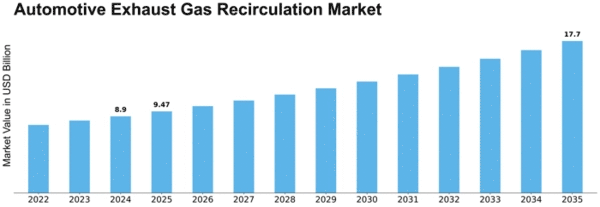

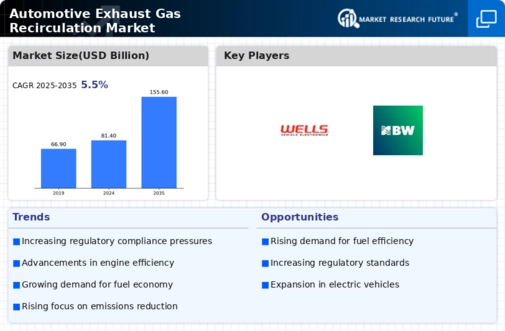
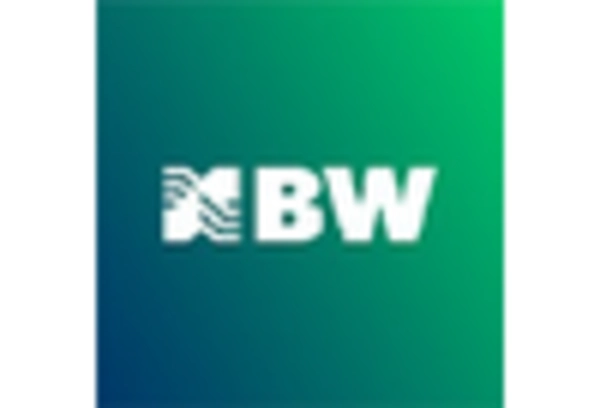

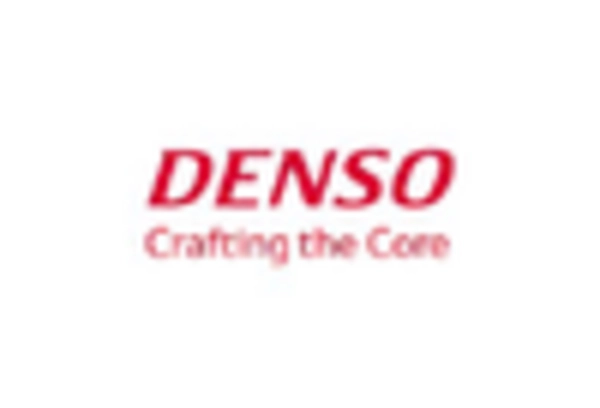
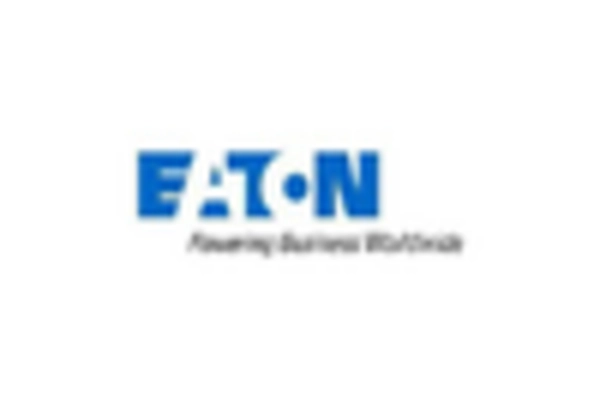
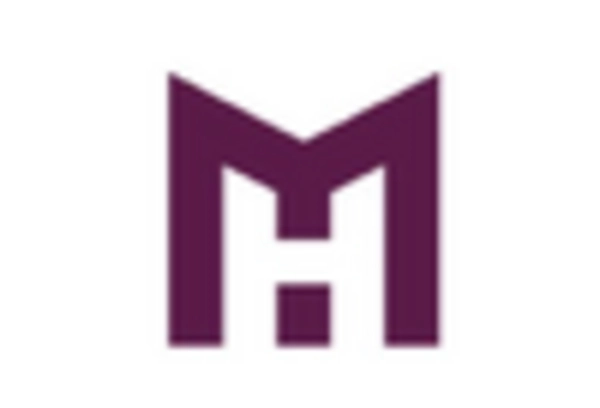
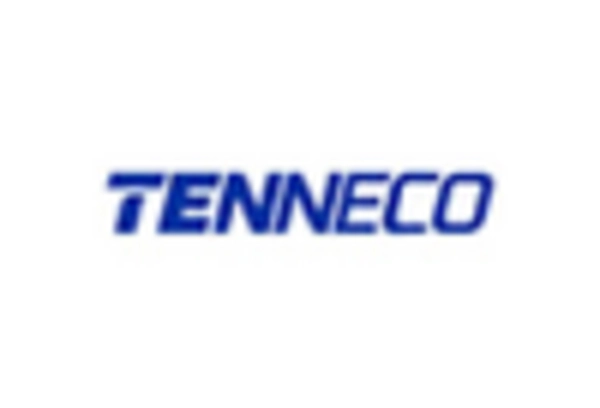










Leave a Comment